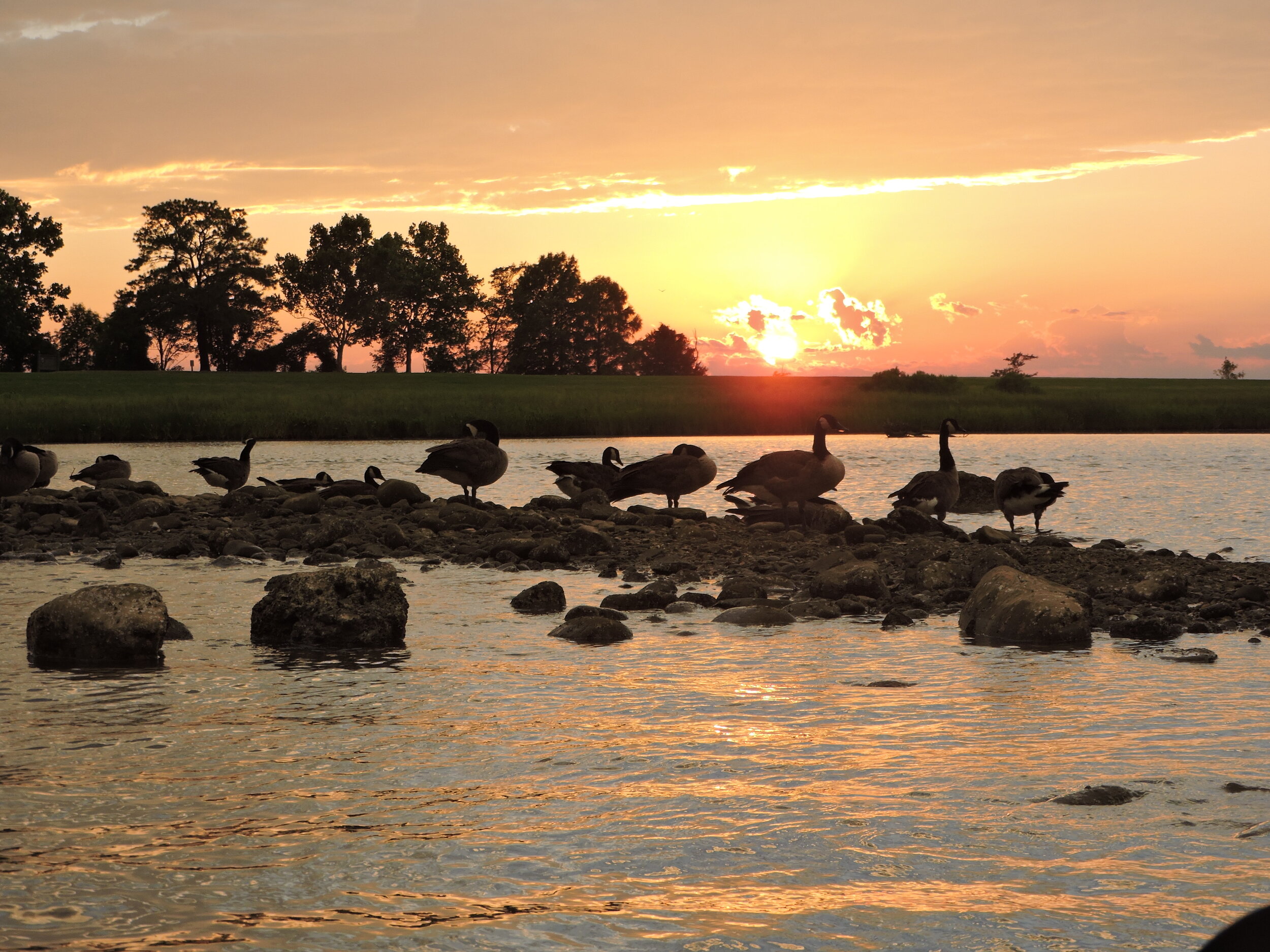Open to the public from 9am to 3pm daily, the Causeway can be accessed free of charge from the small parking area just before the small bridge over the outflow of Powhatan Creek to the James River. The gravel bar east southeast of the pull-off and nearby mudflats are the main pull for birding this hotspot. A scope and a well-timed visit during the 2 hours surrounding low tide are a must for any visiting birder looking to add waders and shorebirds to their county list. See here for the current tidal forecast.
Large numbers of shorebirds will almost never be found here, but the diversity of species recorded over the years is excellent an unlike anywhere else in the county: Marbled Godwit, American Avocet, Black-bellied and Semipalmated Plovers, Stilt Sandpiper, Short-billed Dowitcher, Willet, and Lesser Yellowlegs. In the wader department, Tricolored Heron and Snowy Egret, both difficult species in the county, have been recorded during low tide, indicating that the mudflats here have potential beyond simply shorebirds. While the best window for shorebirds is from May through October, paying a visit here at any time of year may be productive for species like Dunlin, Ruddy Turnstone and Western Sandpiper. Shorebirding can be a bust outside of the couple of hours surrounding low tide, but interesting waterfowl, gulls and terns can still certainly be found by scoping both the James River and Powhatan Creek. Notably, Common and Black Terns (10/5/2015) have been seen here foraging in the creek.
On the James River, Bonaparte’s Gull, Red-breasted Merganser, Greater and Lesser Scaup can be reliably found during the winter, but Sabine’s and Iceland (adult) Gulls, Long-tailed Duck, Black and White-winged Scoter have also been recorded, albeit much less frequently.
James City County’s only record of Black-bellied Whistling-Duck comes from a single bird seen and heard flying up Powhatan Creek at dusk July 19, 2016.
eBird Hotspot: Jamestown Island--Causeway
Owner/Manager: Historic Jamestowne/National Park Service
—Nick Newberry

